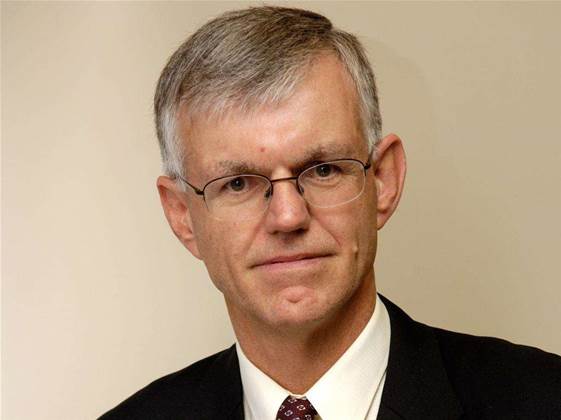With an annual IT budget of some $400 million, Centrelink CIO John Wadeson oversees one of the most data-driven organisations in the country.

In this exclusive interview, Wadeson guides iTnews through Centrelink's response to the cost cutting Gershon report and some of the agency's latest IT projects.
iTnews: Speaking to Minister Tanner last week, he said that agencies like Centrelink and Tax see IT as their 'bread and butter', but small and medium sized agencies don't have that expertise. I thought we could start today talking about what smaller agencies could learn from Centrelink in terms of how you've approached the Gershon cost cutting so far.
Wadeson: The problem for smaller agencies I see is the complexity of this technology involved is a lot more than it used to be. They struggle to sustain technical expertise.
It's not just about building the technology, it's also incredibly complex to run. Today's complex systems require complex skills. Take what is required for virtualisation - this is not simple stuff.
I also think some of them are stuck with smaller systems that are frozen in time.
With relation to the Gershon review, large agencies like ours have a broader field to look across. In smaller organisations, every dollar you spend on IT tends to be bespoke.
iTnews: How is your virtualisation journey going?
Wadeson: I would say we're only a tenth of the way we've got to go on virtualisation.
But one advantage we've got already is the way it has allowed us to move onto bigger platforms.
We're seeing greater stability on those bigger platforms. Our customer portal, for example, has been a lot more stable since being deployed on larger machines.
iTnews: How has Centrelink specifically addressed the Gershon cuts so far?
Wadeson: With these issues, you have got to look inside management structures to measure your efficiency.
So in the first few years we're looking to our major suppliers for savings.
iTnews: For the next twelve months, agencies are being asked to really tighten their belts - where do the next savings come from?
Wadeson: We are currently in the process of a reorganisation. It's a substantial change on how we've been doing things. There is also a rationalisation in our help desk area. [see attached story for more details].
iTnews: By reorganisation, do you mean the letting go of contractors as specified by the Gershon reforms? How many full-time staff have you hired?
Wadeson: I think certainly as per the Gershon recommendations we are now below our ten percent limit. But that is as much to do with the changing economy than the review. We have taken advantage of the continuity and certainty people are looking for, and accepted full-time offers from the people we really want to keep. We've managed to keep on some key individuals.
iTnews: So what does the reorganisation involve, specifically?
Wadeson: We are trying to get a clearer line on responsibilities. It is aimed around reducing the overlap and duplication in terms of roles. We are clarifying roles and responsibilities into a structure than prepares us for future change.
iTnews: What areas of management specifically?
Wadeson: Its management, particularly infrastructure and infrastructure support.
iTnews: What are some of the major IT projects Centrelink is working on?
Wadeson: As part of this restructure, we have a new development team being set up in Brisbane. It is putting in place a scanning and digitalisation network proposal, converting a lot of our work into electronic forms. We produce a lot of paper at Centrelink, and people send us a lot of paper. That's something we are looking to address.
iTnews: The 'paperless' office concept has been floating around a while. Is there a technology fix to the problem now?
Wadeson: The effort is ongoing. Tax is way ahead of us on this.
Until recently, it was the network that was the limitation. But we moved to a new broadband network a couple of years ago now, and we have the capacity to move images around.
Early Government efforts around scanning products were highly centralised - it required big machines and specialist operators. Now it has become easier to do that in a distributed fashion.
The fundamental effort, however, is around work practices. That's the real challenge.
iTnews: When does this work begin?
Wadeson: My SES [senior executive level in public service - of which Centrelink employs 15] officially starts up there this month. We are aiming at employing around 40 developers in the team up there.
We've always done systems testing from Brisbane. We also continue to do development work out of Adelaide and Perth.
iTnews: Have you applied for some project spending from the pool of spending cuts realised from the Gershon review? Where do you think IT can help drive whole of Govt efficiency?
Wadeson: We have certainly applied, but that's a matter for the whole of the Department of Human Services to discuss. We do have something going up, this is highly sought after funding.
IT is key to whole-of-Government. In fact, I'd say there can be no whole-of-Government unless IT can deliver it. It won't happen unless agencies can manage and share data and provide access to systems.
Read on for a discussion of Centrelink's new data centre space and other IT projects...



_(22).jpg&h=140&w=231&c=1&s=0)
.png&h=140&w=231&c=1&s=0)




_(26).jpg&w=100&c=1&s=0)

 iTnews Executive Retreat - Security Leaders Edition
iTnews Executive Retreat - Security Leaders Edition












_(1).jpg&h=140&w=231&c=1&s=0)



